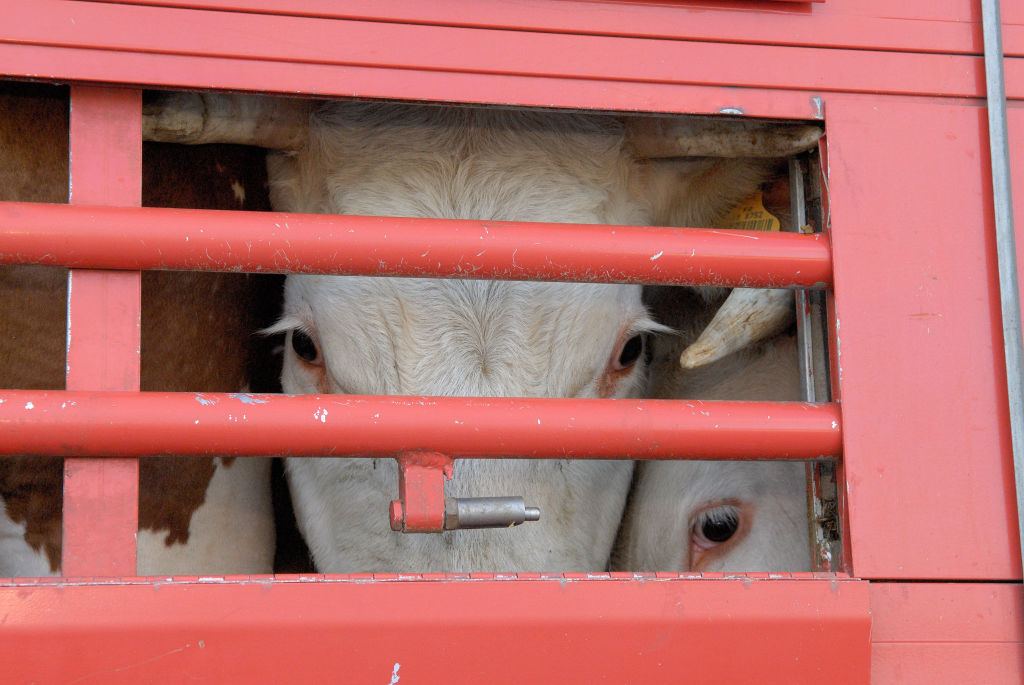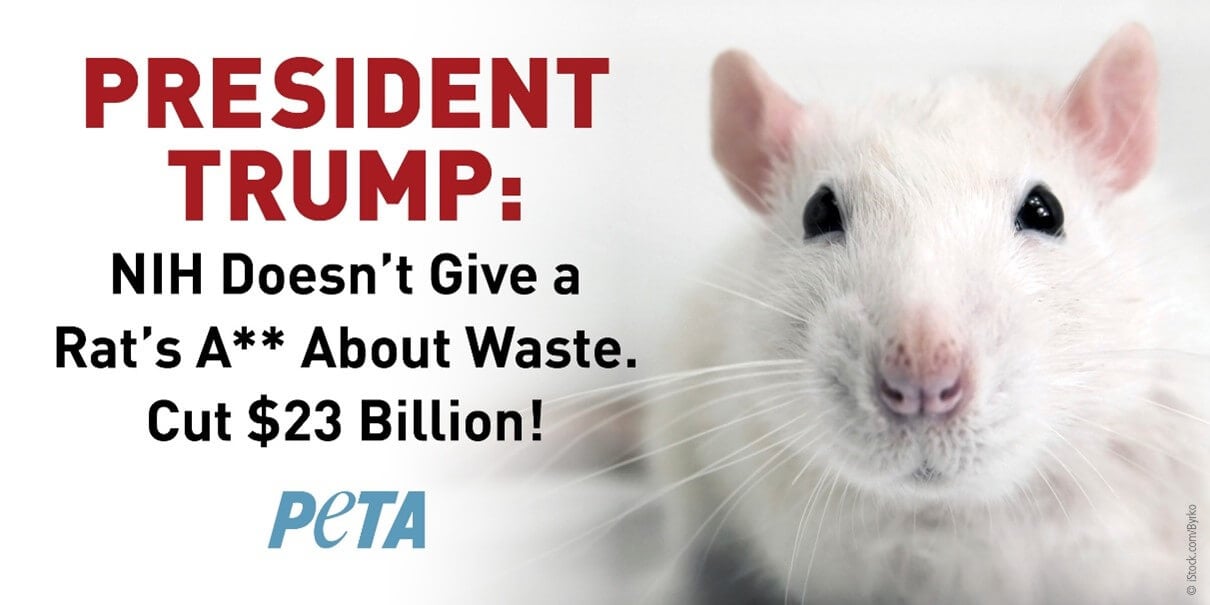
Quantum Computing Jackpot: A $10K June Bet Now Worth $276K Yahoo Finance
source

Euractiv +
For individuals
Euractiv Pro
For corporations
Looking to access paid articles across multiple policy topics?
Interested in policy insights for EU professional organisations?
Animals stuck on a truck for months, an uneven application of EU animal welfare rules, and complex transport costs. Europe’s animal transport conundrums are getting a second look.
This article is part of our special report Animal protection – in Europe and beyond
Underwritten Produced with financial support from an organization or individual, yet not approved by the underwriter before or after publication.
Transport of livestock intended for slaughter. Bovines in a livestock truck. [(Photo by: Leitenberger S/Andia/Universal Images Group via Getty Images)]
This article is part of our special report Animal protection – in Europe and beyond.
Animal transport talks are on the table again, with welfare groups hoping for more robust rulings to prevent cruelty and suffering at the EU’s borders as well as lengthy travel times.
Last week, the Committee on Transport and Tourism (TRAN) and the Committee on Agriculture and Rural Development (AGRI) of the European Parliament shared an exchange of views in a joint committee meeting on the Commission’s proposal concerning the protection of animals during transport and related operations.
The Commission’s proposal contains measures such as limiting journey times and introducing more rest breaks, increasing space allowances during transportation, enhancing the conditions for exports to non-EU countries and new measures around transporting animals in extreme temperatures, both hot and cold.
Jo Swabe, Senior Director of Public Affairs, Humane Society International (HSI)/Europe, said she is pleased to see movement towards increasing animal welfare as the current legislation is not fit for purpose, and animals are suffering because of it. She believes it needs to “be brought in line with current animal welfare science.”
“It must also reflect technological developments, like GPS tracking and the digitisation of their systems in order to track travel time – and for all kinds of traceability. If you’re moving animals across borders, they can also be accompanied by infectious diseases- so you really need to know what is being transported and when and where,” she said.
Lobby interests
Swabe was present at the exchange of views last week. She noted, “It was fascinating how it was very clear that there’d been heavy industry lobby because the same narratives, for example, on increased emissions due to increased space allowances and supposedly, therefore, more trucks on the road, were being repeated by certain parties,” she said.
Animal rights and welfare groups want the meat industry to move away from live exports and have animals slaughtered locally.
Earlier this year, a Bill was passed in the UK banning the live export of animals intended for slaughter or fattening. Could the EU make the same move?
“This is something that we were pleased with – the Commission acknowledged in its proposal, and this was also repeated last week in the meeting, that the preference is to move towards a carcass-only trade instead of transporting live animals.”
“In other words, to transport animals “on the hook” instead of “on the hoof”. If you are shifting operations, you have maybe even the possibility of creating more employment opportunities by having more localised slaughter and the export of meat, rather than the export of live animals,” said Swabe.
“Obviously, animals aren’t just being transported for slaughter purposes, so this only applies to part of the trade,” she added.
To ban, or not to ban?
Daniel Buda, EPP, first vice-president of COM AGRI and rapporteur on the dossier, said the transport of live animals must continue, commenting – “Please stop this train of thought leading to a total ban on such transport!” – explaining they are also transported for reproduction.
“We cannot stop an economic activity indispensable to the survival of our farmers – [farmers] have every interest that their animals are transported to the highest standards possible because their purpose is to ultimately deliver adequate productions of milk or meat,” he said.
“That is precisely why the price of such animals is around €2000-€3000. An injured animal loses its capabilities and will follow the path of the slaughterhouse where the farmer can get a maximum of half the money paid for the animal,” he explains.
When it comes to introducing more ideas of slaughtering locally, he said, “I support the development of local economies and the shortening of the supply chain as much as possible, but this implies, first of all, the development of an adequate slaughterhouse network throughout the EU, and the Union will have to finance such structures!” he explains.
Keeping it real
Buda says it’s his responsibility to ensure that the legislative proposal “remains anchored in the on-the-ground reality” and wants to see “no negative impact on farmers”. It can’t be at “the expense of farmers, sacrificing their welfare and forcing them to give up the rearing of animals altogether in order to survive,” he said, explaining that an expense to farmers would hit the buyer’s pocket, too.
Some of the worst cases of animal suffering during transport can be witnessed at the borders leaving the EU, for example, the Bulgarian/Turkish border, as EU animals are exiting to third countries.
In the last few months, detrimental conditions have led to the premature deaths of heifers and newborn calves.
In September, cows from Germany were approved for travel but then stopped at the Turkish border at Kapıkule and prohibited from entering due to having originated from a blue tongue area. They could also not return to the EU. The 69 pregnant heifers were stuck on the trucks for over a month.
Truck of horrors
“Somehow, the EU considers animal health requirements higher than animal welfare requirements,” said Helena Bauer, Project Manager at Animals’ Angels.
As a result, the shipment had to be slaughtered, but before that happened, during the waiting ordeal, heifers gave birth, thirteen calves died, eight heifers died, two heifers could no longer stand, and the animals had to survive amongst carcases.
As shocking as that may seem, just after the horrific event, trucks from Poland and Romania were stranded at the same border, and several more animals died as a result.
Buda believes that “Regulation 1/2005, which is in force, is a good legislation that allows the European Union to boast with the highest welfare standards in the world. Unfortunately, the law is interpreted unevenly and is poorly implemented, as the European Parliament’s ANIT Committee of Inquiry found, as well as the Court of Auditors in 2023.”
And that the onus should be on all member states to be “responsible for the controls to ensure compliance with the legislation. I remind you that, for the first time in the history of the EU, we have a Commissioner for animal welfare who is responsible for solving such crises.”
He said it “is essential to strengthen prevention mechanisms, reduce bureaucracy and ensure the same animal welfare standards from the point of departure to the destination, whether it is in the EU or third countries. But at the same time, we must take into account the powers of the EU to legislate outside its borders.”
It’s doubtful that those stranded heifers felt the ‘powers of the EU’ or that they were enduring the ‘highest welfare standards in the world’ when they met with such suffering at the border. Something has to give, and it shouldn’t be the knees of innocent stranded cattle. Change is imperative.
The interview with Daniel Buda was conducted via email.
[Edited By Brian Maguire | Euractiv’s Advocacy Lab ]
Rising coffee and chocolate prices drive substitutes industry growth in Europe
19/12/2024
3 min. read
EU agriculture chief Hansen admits limits to farm worker protection
18/12/2024
3 min. read
German parties agree: cut agri-food red tape
17/12/2024
4 min. read
Wolves face increased risk after Bern Convention protections removed
10/12/2024
5 min. read
Outfoxing Europe’s fur trade, politicians take a pelting
28/10/2024
6 min. read
European Algae Biomass president sees expansion of algae products in daily life, calls for improved EU algae market
01/10/2024
5 min. read

Bitcoin dominance surges 6% in a week as altcoin market stumbles amid Fed policies
The recent downturn in the crypto market, marked by significant losses for major altcoins like Ethereum, Solana, and XRP, is driving investors back to Bitcoin.
Data from TradingView reveals that Bitcoin’s share of the overall crypto market has climbed 6% in the past week, standing just below 60% at press time.
This rebound is notable, as Bitcoin dominance had dipped to around 55% following Donald Trump’s election victory in November.
At the time, many analysts predicted the beginning of an “altseason.” This phase is characterized by altcoins outperforming Bitcoin as traders reduce their Bitcoin exposure to capitalize on high-liquidity altcoins. During this period, the Altcoin Index hit a yearly high of 90, reflecting strong capital flow into alternative digital assets.
However, recent policy adjustments by the Federal Reserve have caused sharp price declines across the crypto market. Bitcoin dominance has risen as a result, indicating a flight to safety among investors.
Analysts now suggest that the alt season might have ended, with the Altcoin Index dropping to 43 as of Dec. 20.
Oluwapelumi values Bitcoin’s potential. He imparts insights on a range of topics like DeFi, hacks, mining and culture, underlining transformative power.
Disclaimer: Our writers’ opinions are solely their own and do not reflect the opinion of CryptoSlate. None of the information you read on CryptoSlate should be taken as investment advice, nor does CryptoSlate endorse any project that may be mentioned or linked to in this article. Buying and trading cryptocurrencies should be considered a high-risk activity. Please do your own due diligence before taking any action related to content within this article. Finally, CryptoSlate takes no responsibility should you lose money trading cryptocurrencies.
Bitcoin, a decentralized currency that defies the sway of central banks or administrators, transacts electronically, circumventing intermediaries via a peer-to-peer network.
Ethereum is a decentralized, open-source blockchain platform that enables the creation of smart contracts and decentralized applications (DApps).
Solana is a high-performance blockchain platform that utilizes a unique consensus algorithm called “Proof of History” to achieve fast transaction speeds and low fees.
The XRP Ledger is a decentralized cryptographic ledger powered by a network of peer-to-peer servers.
Disclaimer: By using this website, you agree to our Terms and Conditions and Privacy Policy. CryptoSlate has no affiliation or relationship with any coin, business, project or event unless explicitly stated otherwise. CryptoSlate is only an informational website that provides news about coins, blockchain companies, blockchain products and blockchain events. None of the information you read on CryptoSlate should be taken as investment advice. Buying and trading cryptocurrencies should be considered a high-risk activity. Please do your own diligence before making any investment decisions. CryptoSlate is not accountable, directly or indirectly, for any damage or loss incurred, alleged or otherwise, in connection to the use or reliance of any content you read on the site.
© 2024 CryptoSlate. All rights reserved. Disclaimers | Terms | Privacy
Please add “[email protected]“ to your email whitelist.
Stay connected via

SPONSORED POST*
With Bitcoin surging beyond $100,000 and altcoins reaching unprecedented peaks, a seasoned trader highlights hidden opportunities that could transform modest stakes into substantial wealth by 2025. Enthusiasts are buzzing about which tokens might deliver exceptional returns in the thriving crypto landscape. One standout is XYZVerse (XYZ), a memecoin that unites fans of sports and memes, poised for remarkable growth through its unique community-driven ecosystem.
Summary
XYZ is your exclusive VIP pass to a sports-driven, meme-fueled revolution. Think of it as the MVP of the XYZVerse ecosystem, where degens can score big off the growing demand for meme coins
Picture this: Polymarket hitting $1 billion in trading volume during the US presidential election – now throw in the hype of meme coins and the thrill of sports betting. With millions of sports fans ready to hit the field and cash in the XYZVerse ecosystem is set to keep expanding – and your rewards will slam dunk through the roof!
>>>XYZ presale is your first-quarter chance to get in before the mind-blowing explosion!<<<
In 2024, meme coins are the undisputed champions of the crypto world, and XYZ is set to crush the competition. With potential thousand-fold returns that will blow past the finish line, the presale plan draws a hefty 9,900% growth by the TGE. Forget about BOME’s 5,000% rise or WIF’s 1,000% rally – XYZ is here to outscore them all!
With upcoming listings on major CEX and DEX platforms, rock-solid defense in the form of audited smart contracts, and a fully vetted team, XYZ is already ahead of the game. The first-mover advantage is key here – get in before the crowd storms the field, and you’ll be sitting on way bigger returns!
>>Don’t be left on the bench – grab your XYZ tokens now and be part of the next massive crypto championship!<<
Ethereum isn’t just another cryptocurrency; it’s a game-changer in the digital world. Created by Vitalik Buterin in 2015, it introduced smart contracts and a bustling ecosystem of decentralized apps. It’s moved to a Proof-of-Stake system, making it more energy-efficient. With Layer 2 solutions like Arbitrum and Polygon, transactions are faster and cheaper. Ethereum also brought us ERC-20 tokens, which are used across many applications for things like governance and utility. Ether (ETH) is the fuel that keeps it all running, used for transactions, rewarding those who stake their coins, and acting as a valuable asset.
Looking ahead, Ethereum’s future seems bright. The network plans to introduce sharding, which will make it even more scalable and reduce costs. Price predictions based on past trends suggest ETH could reach as high as $6,580.53 next year and might not go lower than $2,700.31 in 2025. Compared to other coins, Ethereum stands out for its strong technology and active development. In the current market, with growing interest in decentralized finance and efficient blockchain solutions, ETH looks like a promising option. Its ongoing innovations and central role in the crypto ecosystem make it an attractive choice for many.
Dogecoin began in 2013 as a playful twist on the burgeoning world of cryptocurrencies. Created by Billy Marcus and Jackson Palmer, it featured the lovable Shiba Inu dog from a popular meme as its logo. Unlike Bitcoin’s limited supply, Dogecoin was designed to be abundant, with 10,000 new coins mined every minute and no cap on the total number. What started as a joke quickly gained a following, showcasing the power of community and social media in driving interest.
In 2021, Dogecoin captured global attention as its value skyrocketed. Fueled by social media buzz and endorsements from personalities like Elon Musk, it surged into the top ten cryptocurrencies by market capitalization, exceeding $50 billion. Technologically, Dogecoin offers faster transaction times and lower fees compared to some of its peers, making it appealing for everyday use. As the crypto market evolves, Dogecoin remains notable for its strong community support and widespread recognition. While its abundant supply contrasts with the scarcity of coins like Bitcoin, its accessibility and enthusiastic following keep it in the conversation amid current market trends.
Meet XRP, a cryptocurrency designed to revolutionize how we transfer money across the globe. Built on the XRP Ledger, XRP is a digitally native, programmable currency that’s fast, low-cost, and open to everyone. It operates without a central authority, making transactions irreversible and secure. This means you can send money anywhere in the world without needing a bank account, and without worrying about censorship or counterfeiting. Created by Jed McCaleb, Arthur Britto, and David Schwartz, XRP launched with 100 billion tokens, with 80 billion gifted to Ripple for further development.
XRP aims to facilitate seamless payment transfers across different currencies, reflecting its name derived from “ripple credits.” Ripple, initially known as OpenCoin Inc., uses XRP to improve network liquidity and support the ecosystem, placing 55 billion XRP in escrow for controlled release. In the current market cycle, XRP stands out for its potential to transform international payments with its speed and efficiency. Compared to other cryptocurrencies like Bitcoin and Ethereum, XRP offers faster transaction times and lower fees, making it attractive for both individuals and financial institutions. As the crypto market evolves, XRP’s focus on real-world utility could position it favorably among its peers.
Cardano is making waves in the world of cryptocurrency. It’s a platform designed for creating smart contracts, which are like digital agreements that work without middlemen. Cardano’s own cryptocurrency is called ADA. People use ADA to store value, make payments, and even earn more by supporting the network. What’s exciting is that ADA is seen as a rival to Ethereum’s ETH because it offers similar benefits but aims to be more efficient.
One thing that sets Cardano apart is its environmentally friendly approach. Instead of using lots of energy like some other cryptocurrencies, Cardano uses a method called proof-of-stake, which is much kinder to the planet. The platform is also divided into two layers, which helps it process many transactions quickly—some say up to a million per second! In today’s market, with a growing focus on sustainability and speed, ADA looks very attractive. As more people look for greener options in crypto, Cardano’s ADA might be the coin to watch.
While ETH, DOGE, XRP, and ADA are promising, XYZVerse (XYZ) stands out as the first all-sport memecoin, aiming for 20,000% growth with a unique, community-driven ecosystem.
You can find more information about XYZVersus (XYZ) here:
Site, Telegram, X
*This article was paid for. Cryptonomist did not write the article or test the platform.
Stay updated on all the news about cryptocurrencies and the entire world of blockchain.
Let’s tell the future.
The most exclusive news on Bitcoin and cryptocurrencies, trading, fintech, and blockchain.
Stay updated on all the news about cryptocurrencies and the entire world of blockchain.
© 2023 The Crypto Economist SAGL. All rights reserved

For Immediate Release:
December 20, 2024
Contact:
Tasgola Bruner 202-483-7382
If President-elect Donald Trump looks out his windows at Mar-a-Lago today, he’ll see a mobile message from PETA urging him to end the National Institutes of Health’s (NIH) annual waste of billions of tax dollars on cruel and archaic experiments on animals.
PETA’s mobile billboard reads: “President Trump: NIH Doesn’t Give a Rat’s A** About Waste. Cut $23 Billion!” and will be driven on S. Ocean Blvd., bordering Mar-a-Lago, from 8 a.m. to 4 p.m. on Friday, December 20.
“Ending the waste at NIH starts with slamming the brakes on the runaway gravy train that funnels billions of taxpayer dollars each year into cruel, worthless experiments on animals,” says PETA Senior Vice President Kathy Guillermo. “PETA urges President-elect Trump to redirect taxpayer funds to modern research that will both spare animals and speed up treatments and cures for humans.”
NIH squanders nearly half its annual budget on projects involving animal experiments, even though 90% of basic research, most of which involves animals, fails to lead to effective treatments for humans, and 95% of new drugs that test safe and effective in animals fail in human trials. PETA scientists’ Research Modernization Deal provides evidence of the failure of studies on animals and lays out a strategy for transitioning to more cutting-edge science.
Pointless studies funded by NIH include forcing monkeys to stare at photos of candidates to see if they can predict winners, ripping infant monkeys from their mothers and forcing them to wear strobe-effect goggles for 12 hours a day, and relentlessly shocking the feet of mice, supposedly to cause panic attacks.
PETA—whose motto reads, in part, that “animals are not ours to experiment on”—points out thatEvery Animal Is Someone and offers free Empathy Kits for people who need a lesson in kindness. For more information, please visit PETA.org or follow PETA on X, Facebook, or Instagram.
By submitting this form, you’re acknowledging that you have read and agree to our privacy policy and agree to receive e-mails from us.
By submitting this form, you’re acknowledging that you have read and agree to our privacy policy and agree to receive e-mails from us.
By submitting this form, you’re acknowledging that you have read and agree to our privacy policy and agree to receive e-mails from us.
“Almost all of us grew up eating meat, wearing leather, and going to circuses and zoos. We never considered the impact of these actions on the animals involved. For whatever reason, you are now asking the question: Why should animals have rights?”
— Ingrid E. Newkirk, PETA President and co-author of Animalkind
About PETA
Help Animals
For Media
Support PETA
International Sites
Click here to text ELEPHANT to 73822 to urge event organizers to cancel abusive elephant games at Nepal’s Chitwan Elephant Festival. Elephants were gouged with bullhooks!
Terms for automated texts/calls from PETA: http://peta.vg/txt. Text STOP to end, HELP for more info. Msg/data rates may apply. U.S. only.